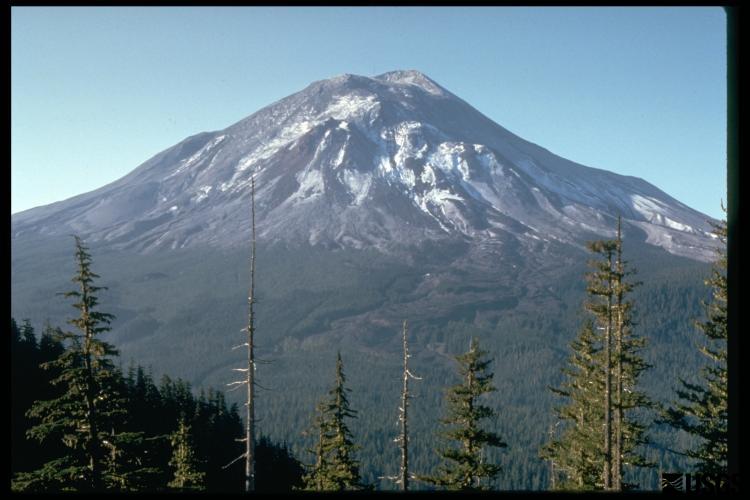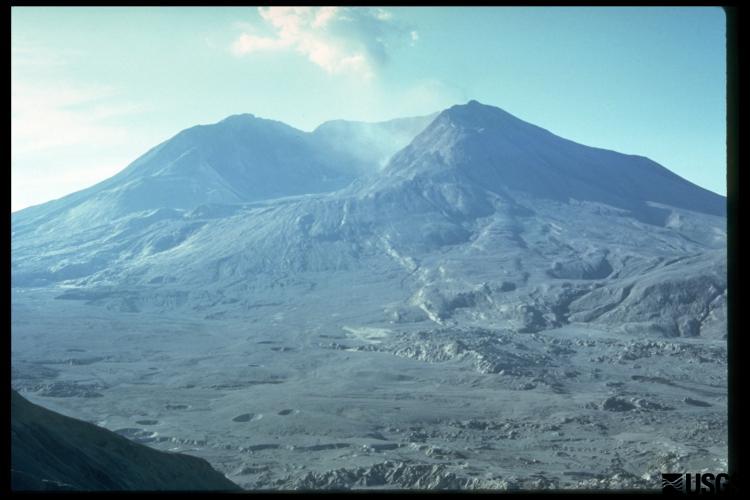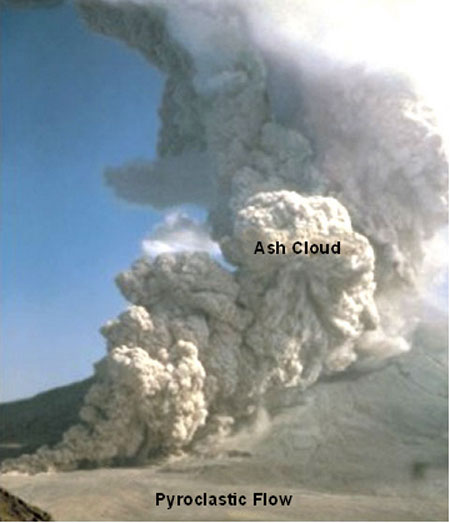Volcanic Eruptions transform a landscape

Mt St Helens, prior to 1980 eruption

Mt St Helens after 1980 eruption
Low Silica Eruptions:
Lava: Lava flows are most common with low silica eruptions. The lava tends to flow easily and cover the landscape. There are different types of lava flows that may result from volcanic eruptions based on the amount of dissolved gas.
- Pahoehoe: Lava that is smoother with a "ropy" appearance
- Aa: Lava that has more dissolved gas and has a "rough, sharp" appearance
- Pillow Basalts: Lava that is exuded underwater is continually exuded then quenched forming rounded mounds that resemble pillows.
Gas: Dissolved gases easily escape from low silica lava. Gas can escape while the lava is still below ground through volcanic vents or fumeroles. Volcanic gases are often high in sulfur which can cause a rotten egg smell and a yellow coloring of the rocks.
High Silica Eruptions:
High silica lava does not flow easily and becomes trapped in the volcanic cone. Over time pressure builds until the pressure in the magma chamber exceeds the strength of the overlying rocks and the volcanic cone explodes. Lava is expelled outward at great speeds. High silica eruptions have a dramatic impact on a landscape.
When the volcano explodes gas and magma are expelled outward. As the lava is expelled into the air, it separates into many different sized pieces. Larger pieces become aerodynamically shaped as they cool and solidify. These pieces are called Bombs. The smaller bits of lava that are expelled harden and are referred to as ash, cinders or lapilli based on their size. Blocks are very large pieces of rock expelled in an eruption. Often they are the remains of older lava flows or pieces of the volcanic mountain that have been blown up in the eruption.
In volcanoes with high silica lava gas becomes trapped in the viscous lava and cannot escape. When the volcano explodes gas is expelled out of the cone at great speeds. Nuee Ardente or pyroclastic flow is the term used for the gas expelled from volcanic cones at great speeds. This gas is mixed with ash and is very hot, it is often referred to as a "glowing gas avalanche" and looks like a cloud due to the ash within the gas. The pyroclastic flow is dense and moves at ground level flattening and scorching everything in its path .

Mud flows, known as lahars, are produced when fine volcanic material is mixed with water. This commonly occurs when a snow cap is melted from the top of a volcanic cone due to sudden heating. Water from the snow cap mixes with ash producing a thick mud with a consistency of wet concrete. Lahar deposits cover the landscape to tens of feet thick.